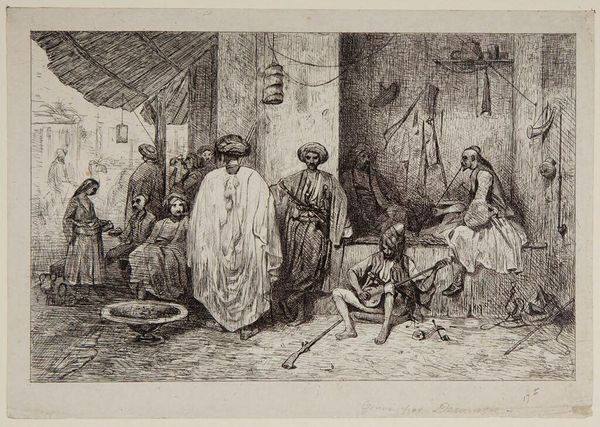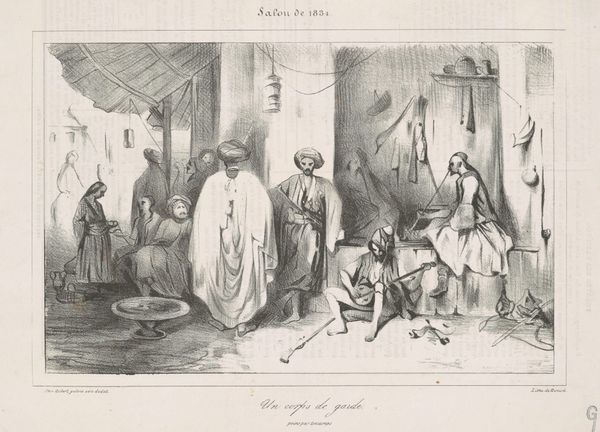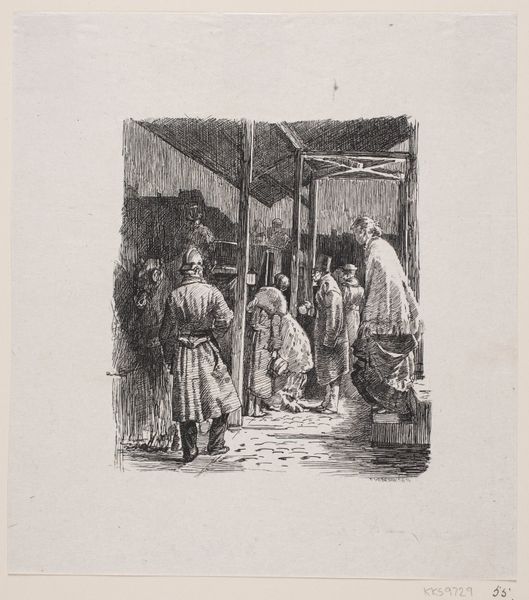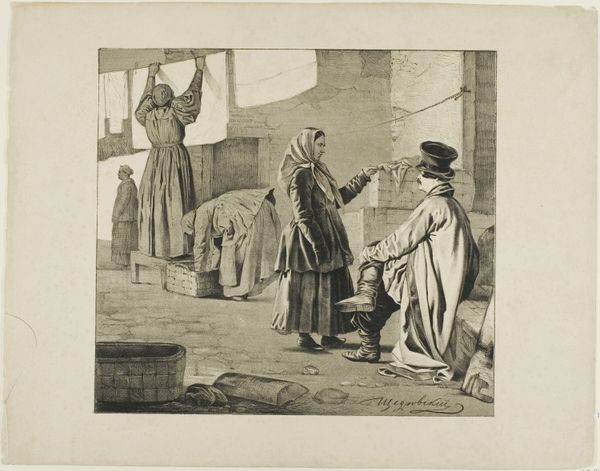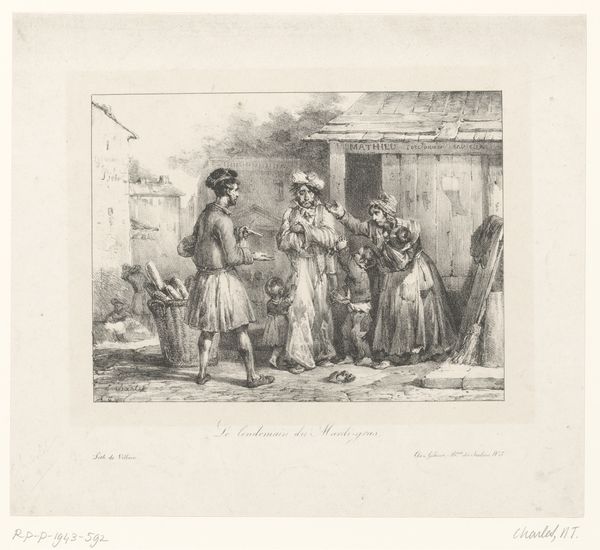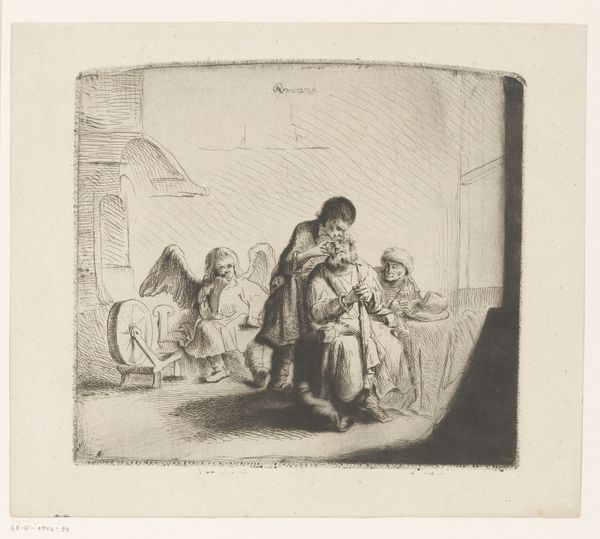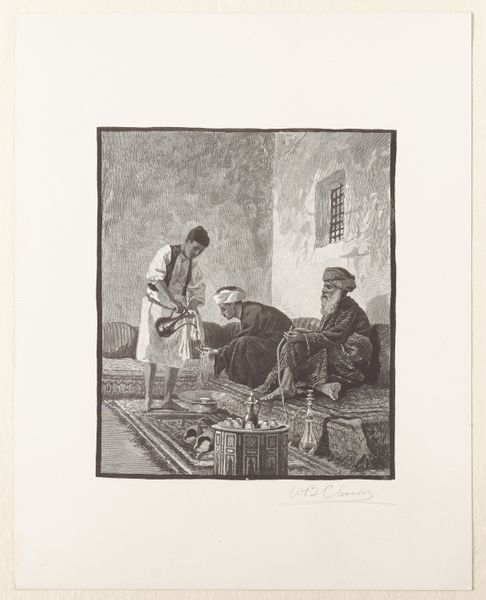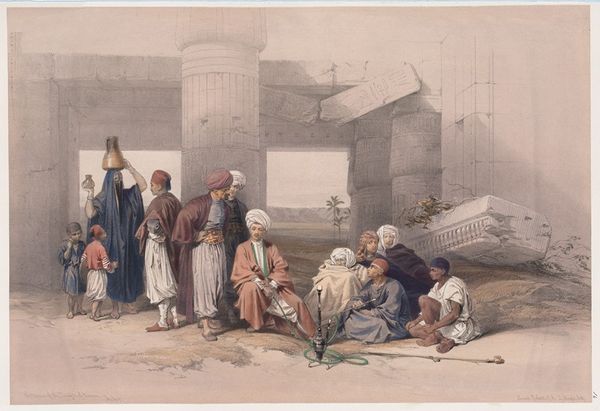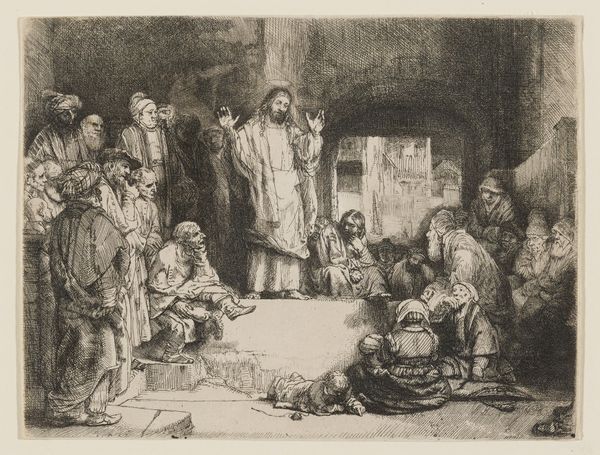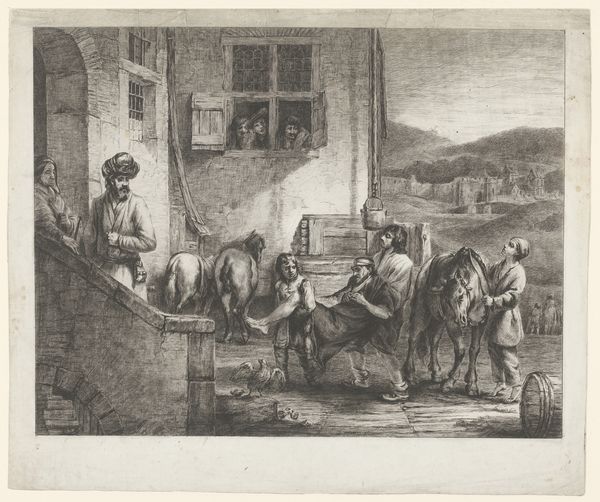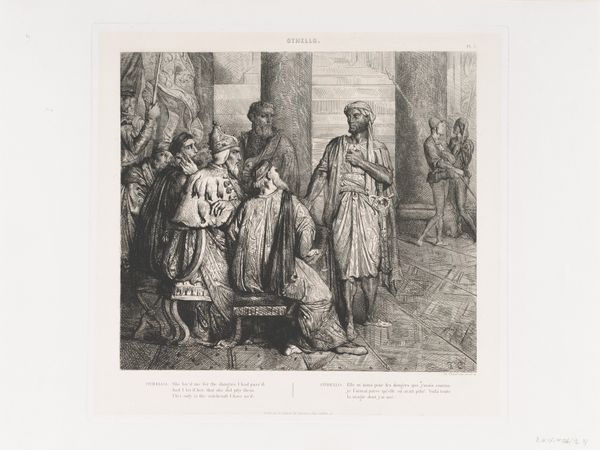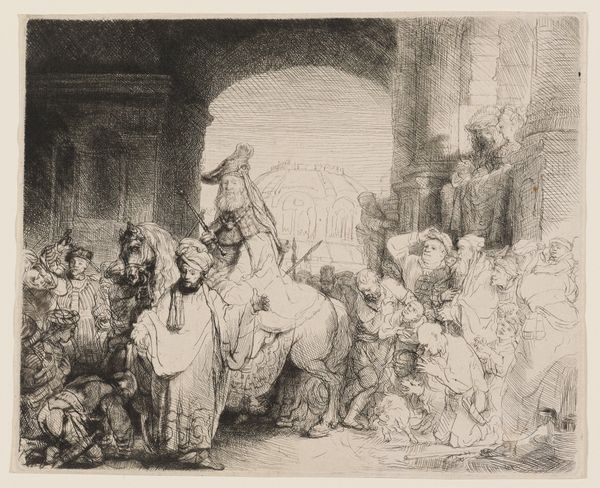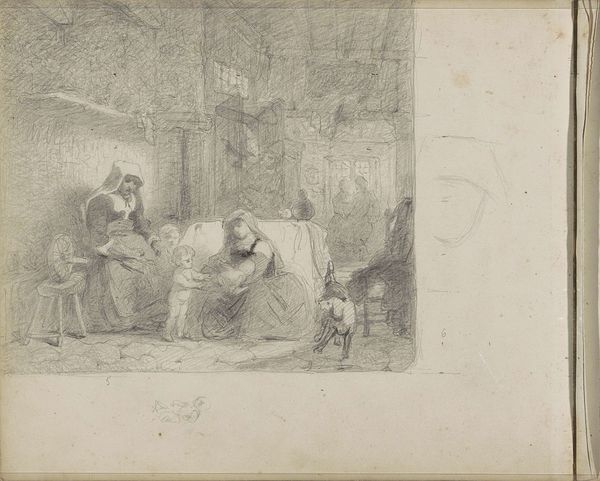
drawing, print, etching, paper
#
drawing
# print
#
etching
#
pencil sketch
#
paper
#
romanticism
#
orientalism
#
genre-painting
Dimensions: 157 × 245 mm (image); 184 × 264 mm (chine); 205 × 273 mm (sheet)
Copyright: Public Domain
Curator: This is Alexandre-Gabriel Decamps' "Turkish Guard House," created in 1834. It's a print, an etching on paper, currently residing at the Art Institute of Chicago. The cross-hatching and dense composition definitely capture a busy scene. I'm curious about how the artist used line to define space and depth here. How do you interpret this work, based on these compositional choices? Editor: It strikes me as chaotic, but deliberately so. The artist’s technique, the intricate lines and overlapping forms, feels like it's meant to reflect a vibrant, active environment. The scene is bustling. I see a central gathering of figures framed on the left with supporting figures and architecture around the background edges, leaving some negative space for the background details. How does this inform the relationship with space? Curator: The composition certainly lends itself to an interesting exercise in the visual structure of a contained space. The interplay between foreground and background is subtly handled, don't you think? Note how Decamps uses the etching technique itself -the density of line- to define form and spatial recession. The textural richness contributes to the overall effect of a vibrant space. This etching demonstrates an attempt to resolve planar ambiguities between what should come forward, versus what sits in the shadows. Do you notice the formal symmetry this compositional element helps generate? Editor: Yes, I think I see that! The weight distribution feels deliberately balanced, especially considering how asymmetrical it seemed at first glance. So, rather than aiming for realistic depth, he seems more concerned with the textural density and overall pattern created by the etching? Curator: Precisely! And the artist uses these elements to draw your eye around the whole piece. Line is contour and content, wouldn’t you agree? Editor: That’s a great point; thinking about the linework as the literal foundation of the work makes me appreciate it in a completely different way. Curator: Indeed, analyzing the work in terms of form can bring us much closer to understanding its structural content, it becomes almost a construction to be deconstructed to see it clearly.
Comments
No comments
Be the first to comment and join the conversation on the ultimate creative platform.
